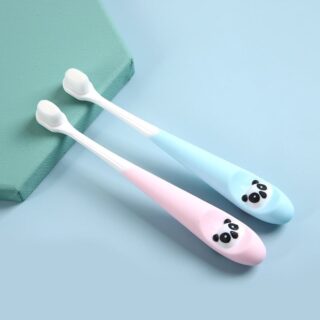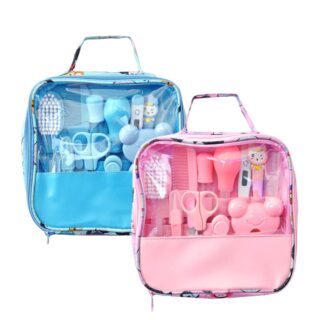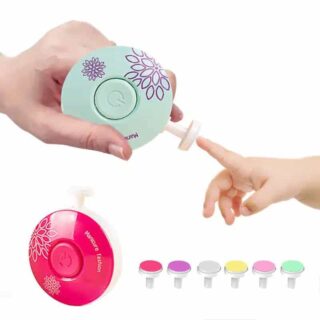-
Children's hygiene products, Children's accessories
Price range: 27,40 $ through 32,90 $ Select options This product has multiple variants. The options may be chosen on the product page -
Children's accessories, Children's hygiene products
15,30 $ Select options This product has multiple variants. The options may be chosen on the product page -
Children's accessories, Children's hygiene products
29,60 $ Select options This product has multiple variants. The options may be chosen on the product page -
Children's accessories, Children's hygiene products
16,40 $ Select options This product has multiple variants. The options may be chosen on the product page -
Children's accessories, Children's hygiene products
25,20 $ Select options This product has multiple variants. The options may be chosen on the product page -
Children's accessories, Children's hygiene products
Price range: 17,50 $ through 18,60 $ Select options This product has multiple variants. The options may be chosen on the product page
This is made easier by the use of accessories that transform these restrictive activities into a pleasant, even fun, time for them. That’s what we offer here in this store.
What are the basic hygiene principles a child should follow?
Hygiene is an important aspect of a child’s daily life. It’s essential that children learn basic hygiene principles from an early age to maintain good health and prevent the spread of disease. The first basic hygiene principle a child should follow is to wash his or her hands regularly.
Hands are the main vector for transmitting germs, so it’s important to wash hands before eating, after using the toilet, and after touching animals or dirty surfaces. Next, it’s important for children to take care of their dental hygiene by brushing their teeth twice a day. This helps prevent cavities and gum problems.
It’s also important that children take care of their personal hygiene by showering or bathing regularly. This helps get rid of bacteria and body odor. Children should also learn to use soap to wash their body and hair.
Soap helps eliminate bacteria and dirt that can accumulate on the skin. Finally, it’s important for children to follow a daily hygiene routine to maintain good health. This can include washing hands before every meal, brushing teeth twice a day, showering or bathing regularly and wearing clean clothes.
Initiating a child to brush
Initiating a child to brush their teeth is an important step in their life. From their own young dental age, it’s vital that parents teach their child to perform this routine effectively. To ensure good oral hygiene, brushing should be integrated into the routine from an early age.
Parents should therefore explain to their children the importance of brushing every day, and show them how to do it properly. It’s also important to choose an age-appropriate toothbrush and explain how to hold it properly for optimal brushing. Children can be encouraged to brush their teeth by using colorful toothbrushes or ones with cartoon characters they like.
By establishing a regular tooth-brushing routine, parents can help their children take care of their dental health from an early age. It can also help prevent cavities and other dental problems in the future. All in all, introducing a child to tooth brushing is an important gesture for his or her health and well-being. Parents need to be involved in this process from an early age to ensure good oral hygiene for their child.
In a nutshell:
Milk teeth can be maintained. From the age of 2, teach your child to brush his or her teeth.
Have your child brush morning and night. Prohibit sweets after evening brushing to avoid cavities.
Have clean hands at all times
Wash your child’s hands with soap and water. The correct washing procedure is as follows:
- Wet hands;
- Soap hands;
- Rub palms;
- Scrub tops of hands;
- Scrub between fingers;
- Rinse hands;
- Dry hands with a clean towel;
He must wash his hands:
- Before meals;
- After meals;
- After contact with animals ;
- After any play ;
- After leaving the bathroom;
- After leaving the classroom;
Hygiene involves all these gestures.
The art of washing
Washing is an essential part of the daily routine, but it can also be a moment of relaxation and self-care. The process of washing can be considered a true art, requiring special attention to achieve the best possible results.
The first step in the art of washing is to choose the right products for your skin type. There are a wide variety of soaps, shower gels and other washing products on the market, each with its own advantages and disadvantages. It’s important to find the one that best suits your skin type, whether dry, oily or sensitive.
Once you’ve chosen the right wash, the next step is to apply it correctly. If you’re using a bar soap, rub gently into damp skin, creating a rich lather. For shower gels, apply a small amount to a sponge or washcloth and gently massage into the skin. In both cases, it’s important to rinse thoroughly to remove any soap or shower gel residue.
The next step in the art of washing is moisturizing. After washing, it’s important to moisturize the skin to protect it from drying out. Use a body lotion or moisturizing cream to seal in moisture and leave skin soft and supple.
Finally, it’s important to look after your hair by washing it regularly with an appropriate shampoo. The choice of shampoo will depend on your hair type and specific needs. It’s also important to use a conditioner to moisturize hair and make it easier to style.
In short, the art of washing involves choosing the right products, applying them correctly, rinsing well, moisturizing the skin and caring for the hair. Taking care of yourself by washing can be a moment of relaxation and self-care that helps improve overall health and well-being.
Teach your child to comb his or her hair
Running detangler through hair makes combing easier. Wash his hair with shampoo.
Compliment your child every time he brushes his hair.
Get him into the habit of brushing his hair before school.
Blowing nose
Blowing your nose is a simple gesture, but it can be very effective in eliminating excess mucus and nasal congestion, which can help reduce cold, flu and allergy symptoms.
The first step to blowing your nose is choosing the right tissue. Disposable tissues are a practical and hygienic option. Make sure you always have a pack of tissues to hand when you need to blow your nose.
The second step is to blow your nose properly. First of all, it’s important to wash your hands before blowing your nose to avoid spreading germs. Next, take a handkerchief and fold it in half to form a small square. Place the handkerchief against one nostril, pinching the other nostril closed with a finger. Blow gently through the open nostril until all the mucus is evacuated. Repeat the process on the other side.
After blowing your nose, it’s important to dispose of the used tissue immediately to avoid spreading germs. Then wash your hands again to eliminate any remaining germs.
Finally, if you suffer from frequent nasal congestion, there are natural remedies such as steam inhalation, salt water nasal washes and natural decongestants that can help reduce symptoms.
In short, blowing the nose is a simple but important gesture for eliminating excess mucus and nasal congestion. Choose the right tissue, blow your nose correctly and dispose of the tissue immediately to avoid spreading germs. If you have frequent nasal congestion, natural remedies can also help relieve symptoms.
How to care for your ears
Taking care of the ears is important for your child’s health and well-being. Regular ear cleaning is essential to remove excess wax and prevent infection. However, it’s important not to insert cotton buds or other sharp objects into your child’s ears, as this can cause damage and infection.
Ear cleaning should be done gently, using hygiene products specially designed for children. Children’s ear drops can be used to soften wax and facilitate its removal. Gentle cleaning with a soft cotton pad or clean towel is also recommended.
It’s also important to protect your child’s ears from damage caused by excessive noise. Children’s earplugs are available to protect ears at concerts, fireworks or other noisy events.
Some tips for teaching your child personal hygiene
Here are a few tips for teaching your children the right gestures:
Install a hygiene habit in your child
It’s important to install a hygiene habit in children from an early age. There are a number of tricks you can use to make this moment fun and enjoyable. First of all, you can create a game around hygiene. For example, ask the child to find pictures of toothbrushes, soaps or shampoos in magazines and stick them on a piece of paper. This will allow the child to have fun while learning about hygiene. Next, it’s important to show the child what to do. For example, you can explain how to wash hands properly by singing a little song. Similarly, you can show them how to brush their teeth using an age-appropriate toothbrush.
It’s also a good idea to choose a specific time to introduce this hygiene routine. For example, you could decide that brushing should take place just before bedtime. This will enable the child to get into the habit of brushing at the same time every day. Finally, it can be useful to use a routine chart. This will enable the child to visualize the different stages of his or her hygiene routine, and to tick off each stage completed.
This will give them personal satisfaction and encourage them to continue taking care of themselves. In short, establishing a hygiene habit in children is essential for their health and well-being. By using playful tricks, you can be sure the automatism will set in.
Leave hygiene equipment within your child’s reach
To help your child learn the right gestures, make the right accessories available. Give your child our magical U-shaped children’s toothbrush and teach him how to use it.





